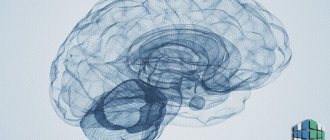Rigid people - those who do not recognize any changes, do not know how to adapt to situations or simply do not change their point of view, are conservative, far from stupid, with a high level of IQ. Most researchers argue that human adaptation in society is a normal process. It happens to everyone and is called “socialization”. But how can one be quarrelsome and disagree?
Let's take a closer look at what rigidity is in psychology.
Rigid person - Who is this? Rigidity - What is it in Psychology?
Conservative people do so little evil because they are timid and unsure of themselves;
It is not the conservatives who do evil, but the evil ones. Anton Pavlovich Chekhov
- 1.Rigidity: description of the concept and main characteristics
- 2. How can you tell if a person is rigid?
- 3.Types of rigidity
- 4. A rigid person is a clear portrait 4.1. What if rigidity is given to us all in moderation?
- Only introverts can see these hidden images, thanks to their unique powers of observation.
- Introvert - who is it? The whole truth about introverts
- "Rorschach stains" or a test for psychopaths
- Who do you see first? Your answer will show your personality!
- Psychology of color: How each color characterizes personality
Rigidity: description of the concept and main characteristics
This is a mental property that is not characteristic of every individual.
Rigidity is promoted by a person’s mentality, character, disposition and heredity. Such qualities as conservatism and reluctance to make quick changes are at the root of the concept of “rigidity”. Psychologists tend to believe that if observed in moderation, this quality can be very useful. However, a person who abuses his own obstinacy and unwillingness to change himself and the world around him should think about pathology. But rigidity cannot always be attributed to a mental illness. Rather, this quality is a character trait. Here education plays a huge role.
When an individual suffers from obvious manifestations of rigidity, it can be assumed that he will soon subject himself to maladjustment. However, most psychologists say that rigid people clearly control their behavior and simply tend to exaggerate their own feelings and desires.
The degree of manifestation of rigidity varies. According to scientists, there are cases of catastrophic inability of an individual to adapt to new realities, or manifestations of rigidity in a partial sense. It is precisely the level of rigidity that depends on the psychology of the individual, as well as the characteristics of each specific situation that requires the manifestation of adaptability qualities.
Rigid people are very impressionable, unreliable (you cannot rely on them, trust them), stubborn, and very emotional. They clearly demonstrate their reluctance to change or adapt.
The individuality of a person as an individual - what is it?
Why is rigidity bad and how to get rid of it?
Indeed, what’s wrong with stubbornly overcoming all obstacles, going towards a goal, defending your beliefs, or being faithful to your lover all your life? Not bad, of course. But unfortunately, rigidity is not limited to this and, like any personal qualities, it has its negative sides, especially when dealing with its high level. And perseverance turns into obstinacy, defense of one’s beliefs into fanaticism, and loyalty to one’s beloved into the desire to keep her close to you even against her wishes.
It turns out that rigidity often does not help a person in life, but hinders him:
- prevents the assimilation of new things, and, therefore, reduces the effectiveness of training and development;
- prevents a person from adapting to a rapidly changing world;
- is a source of interpersonal conflicts when stubbornness makes a person irreconcilable and incapable of compromise;
- can provoke a life-threatening situation when an overly confident person ignores the danger;
- often supports the passivity and inertia of people prone to laziness;
- Constantly experiencing and “chewing” emotions leads to emotional burnout, frustration and neuroses.
As you can see, there is a lot of harm from rigidity. And even if a person himself feels that his own stubbornness and conservatism are preventing him from developing and achieving success, then, undoubtedly, measures should be taken. In order to make your behavior more flexible and flexible, it is better to consult a psychologist or psychotherapist. (And if we are talking about pathology, then see a psychiatrist). Psychotherapy, psychoanalysis, psychocorrectional measures and communication trainings quite effectively remove the negative manifestations of rigidity.
But if rigidity manifests itself only as an insignificant background in a person’s behavior, then it can simply be taken into account when choosing a field of activity or social circle. A person’s awareness of his behavioral problems is already the path to their resolution.
How can you tell if a person is rigid in front of you?
Rigidity, according to experienced specialists in the field of psychology, is nothing more than a psychopathic phenomenon, characteristic of individuals with obvious paranoid tendencies, sick by nature, which is called hereditary factors.
Rigidity is a mental illness. If the degree is aggravated by other factors (withdrawal, depression, frequent manifestations of aggression), this option can be considered clinical. The patient needs to be treated. And here specialists from the psychiatric service get involved.
Rigid people are very conflicted. If a person has a lot of ideas, even if they are not feasible, such a person is literally obsessed with his thoughts.
However, not all experts believe that rigidity is a diagnosis. According to the comments of a number of psychologists, the concept should be considered in a positive way.
Such properties are in great demand in work activities that involve routine. For example, working at a machine, sorting, at a conveyor belt.
Conservatism is not always a negative concept. But if a person develops a sharp fear of change, surprises, and at the same time the person does not react in any way to a change in the situation, falling into a stupor, it is better to take control of this condition by paying close attention. If necessary, you should undergo a course of treatment, as well as conversations with a psychologist.
It is important to remember that focusing on the inability to change with fundamental changes in society or the environment of such an individual does not in any way affect his self-esteem. In fact, rigidity can be contrasted with flexibility of mind, a high degree of adaptability to new conditions and circumstances.
Clinical case
Patient T.
, 23 years old, was sent to the regional clinical hospital of Krasnoyarsk with complaints of severe progressive stiffness and painful spasms of the muscles of the back, neck, chest, abdomen, shoulder girdle with significant limitation of spinal mobility, difficulty in performing movements, walking (slowing down and shortening the step) and self-care , limitation of free speech due to stiffness in the articulatory muscles, general weakness, difficulty swallowing food (especially solid), loss of body weight by 10 kg over 3 months. The patient also noted increased stiffness of the trunk muscles with excitement, sudden stimuli (loud sound, fear, etc.) and a decrease during sleep.
From the anamnesis it is known that in childhood he grew and developed without any special features. A vegetarian since childhood, over the last year he began to eat meat. At the age of 16, she was diagnosed with thoracic kyphoscoliosis and was bothered by moderate pain in the back. The development of the present disease occurred over the course of a year; moderate stiffness and soreness appeared in the muscles of the trunk, which was associated with stress. Next, muscle stiffness, slower walking, and difficulty performing physical work progressed. After 3 months, he began to notice choking on dry food and a decrease in body weight. The patient's above-mentioned complaints progressed steadily, muscle stiffness increased and other symptoms became much more pronounced.
Hereditary history is not burdened.
Neurological status upon examination: walking independently, oligobradykinesia noted. The patient is hypomimic and does not sit down during examination (he notes increased contraction in the back muscles when sitting). Oriented, adequate, mild dysarthria in speech, answers questions in short phrases, lacks speech initiative. Needs help in everyday life and with self-care (difficulty getting dressed, getting a mug from the shelf, washing, etc.). Memory within normal limits, decreased attention. Palpebral fissures D=S, pupils D=S, eyeball movements in full, no nystagmus, no diplopia. Trigeminal points are painless, sensitivity on the face is not impaired. The nasolabial folds are somewhat asymmetrical. The tongue is in the midline, the tone of the tongue is slightly increased. The soft palate is mobile, the uvula is in the midline, the pharyngeal reflex is preserved. Dysphagia when eating dry food. Tension of the neck and oromandibular muscles, limitation of rotation and tilt of the head. Severe kyphoscoliosis in the thoracolumbar region, limitation of movements in all parts of the spine. Severe tension in the muscles of the abdomen, back, and neck (Fig. 1).
Rice. 1. View of patient T. (a) from the front and (b) from the side. The paravertebral muscles in the area of scoliosis are moderately painful on palpation. Stiffness in the muscles of the arms and legs. Limitation of the range of active movements in the upper limbs to chest level. Muscle strength in the limbs is sufficient in all segments, tendon reflexes D=S. There are no pathological signs. No sensory disturbances were detected. Coordinator tests are performed satisfactorily. There are no meningeal signs. Pelvic functions are not impaired. Signs of autonomic dysfunction: bright diffuse dermographism, hyperhidrosis of the palms and feet.
The patient underwent further examination by a geneticist at the regional medical genetic center; there was no evidence of lysosomal storage diseases.
According to magnetic resonance imaging of the brain, there were signs of moderate external hydrocephalus, minimal ectopia of the right cerebellar tonsil; multislice computed tomography (MSCT) of the chest, abdominal organs, ultrasound examination (ultrasound) of the abdominal organs - without pathology; esophagogastroscopy - gastric erosion, ultrasound of the thyroid gland - without pathology.
A complete blood count, biochemical blood test, general urine test, rheumatological tests, creatine phosphokinase were within normal limits for the entire observation period. Blood test for thyroid hormones (total T3 - 1.17 nmol/l, total T4 - 100.53 nmol/l, TSH - 2.49 mU/l) - within normal limits. Analysis for tumor markers: alpha-fetoprotein - 3.55 IU/ml (normal), cancer embryonal antigen - 2.9 ng/ml (normal). Needle electromyography (EMG) was performed: spontaneous EMG recorded constant motor activity of muscle units and spontaneous activity in the form of fibrillations, fasciculations and single positive sharp waves. In the trapezius muscles, the motor unit potential is normal. Consulted with related specialists (nephrologist, orthopedist, neuropsychologist, psychiatrist, ophthalmologist, ENT doctor, urologist, gastroenterologist), data regarding ankylosing spondylitis, cancer, systemic connective tissue disease, psychiatric and other pathologies have not been established.
A blood test was performed for antibodies to GAD (glutamate decarboxylase), and an elevated level was recorded - 32.70 U/ml (normal value is less than 10 U/ml).
Considering the gradual onset of the disease with muscle tension, painful spasms, slow progression, difficulty walking, dysphagia, autonomic dysfunction, the absence of cognitive impairment and other somatic and neurological pathology, confirmed by electromyographic data, the presence of antibodies to antigens of GABAergic neurons, the diagnosis “G25” was made .8 Other specified extrapyramidal and movement disorders. SRF with severe rigidity, dysphagia, dysarthria, autonomic dysfunction, skeletal deformities in the form of severe kyphoscoliosis, moderately progressive course, stage of incomplete stabilization.” The patient was consulted in absentia at the Federal State Budgetary Institution "Scientific Center of Neurology". Taking into account the results of the comprehensive examination, the most likely pathogenesis of the disease was autoimmune.
The patient was hospitalized in the neurological department for immunosuppressive treatment and selection of further therapy. During hospitalization, gastroscopy revealed erosive lesions of the stomach, which was a contraindication for pulse therapy with methylprednisolone. A course of treatment with intravenous human immunoglobulin (Octagam 5%) was carried out at a dose of 0.4 g/kg/day for 5 days; baclofen was added as additional therapy at a dose of 10 mg 3 times a day, valproic acid 600 mg per day (for the purpose of stimulation of GABA transmission). During treatment, dynamics were noted in the form of a decrease in muscle stiffness, an increase in the range of movements in the cervical spine, a decrease in speech disorders and dysphagia. The patient was recommended to take cyclosporine at an initial dose of 50 mg/day, which the patient refused to increase further. After treatment for 3 months, the patient's condition stabilized, he became more active, rigidity decreased, speech activity improved, and he swallows freely. During a routine examination, therapy was adjusted: valproic acid was replaced with levetiracetam at a dose of 500 mg/day, diazepam was added at a dose of 10 mg/day, baclofen 30 mg/day, and further use of cyclosporine was stopped, and the patient refused. During a six-month follow-up, the patient's condition remained stable.
The disease further progressed in March 2022, when stiffness in the muscles of the shoulder girdle and neck began to increase, and swelling of the feet appeared, which were regarded as a side effect of taking levetiracetam. The drug was discontinued, but the swelling of the feet did not regress. In April 2022, paresis of the left arm was added to the clinical symptoms, which developed acutely during a meal, when the arm was suspended (Fig. 2).
Rice. 2. Patient T. Peripheral monoparesis on the left. An emergency medical team was called, the patient with suspected acute cerebrovascular accident was taken to the hospital, examined, a dynamic MSCT of the brain was performed - without pathology, a stroke was excluded. During the examination, progression of kyphoscoliosis was noted, peripheral paresis of the proximal (3-3.5 points) and distal (1.5-2 points) parts of the left upper limb was detected with loss of reflexes, absence of pain, and the presence of vegetative-trophic disorders in the form of edema of the left hand , painful upper monohypesthesia of the left arm. Palpation revealed pronounced rigidity of the paravertebral muscles and neck muscles; trigger points were identified in the muscles of the neck and shoulder girdle on the left. According to the results of electroneuromyography (ENMG), a slight decrease in the speed of impulse conduction is recorded during antidromic stimulation of the sensory endings of the median and ulnar nerves on the left. The dynamics revealed an increase in the titer of antibodies to GAD - 101.50 U/ml.
The acute occurrence of brachioplexopathy on the left when performing arm movements against the background of severe muscle rigidity in the neck and shoulder girdle was probably due to the compression-ischemic factor in combination with dysimmune mechanisms. The latter is supported by an increase in the titer of anti-GAD antibodies, accompanied by a deepening of previously existing and the emergence of new clinical manifestations of the disease. In addition, upon examination, the patient had swelling of the feet (Fig. 3),
Rice. 3. Patient T. Swelling of the feet. painful hypoesthesia of the “sock” type, loss of Achilles reflexes on both sides. According to ENMG data, a decrease in the speed of impulse conduction was recorded during antidromic stimulation of the sensory endings of the sural and superficial peroneal nerves on both sides. Thus, along with plexopathy, the patient was diagnosed with damage to another part of the peripheral nervous system in the form of distal sensory-vegetative polyneuropathy of the lower extremities. The lack of data on the paraneoplastic process suggests that the most likely cause of the development of polyneuropathy in the observed patient is an autoimmune mechanism. In addition, given the patient's low body weight, it is possible to assume metabolic damage to the nerves of the lower extremities.
Taking into account the progression of neurological symptoms, an increase in the titer of antibodies to GAD, and the absence of changes in esophagogastroscopy, a course of pulse therapy with methylprednisolone was administered at a dose of 1000 mg 5 times. The patient was consulted by a physical therapy doctor, physical therapy was selected, and Trental and neurometabolic therapy (thioctic acid, Keltican complex) were added to the therapy. The patient was discharged in a stable condition, however, no significant changes in symptoms of damage to the peripheral nervous system were noted.
Types of rigidity
In psychology, there are only 3 main types of rigidity:
- Cognitive.
The cognitive variety is caused by a person’s inability to change the picture of phenomena and worldview he himself has formed. Despite the fact that there is more and more information in the modern world, you need to be able to adapt to changes in society.Such people are practically unable to correct the planned action. If they have already determined for themselves this or that scheme according to which they will act, they will definitely not change it, under any circumstances.
- Motivational.
The motivational type of rigidity involves a refusal to change established and long-accepted needs. This applies to food preferences and behavioral reactions. Such an individual simply gets stuck in the same situations, repeating them over and over again.The habit of working under the same conditions and receiving a stable salary is also a kind of motivational type of rigidity.
- Affective.
The affective type is characterized by the creation of “exorbitant” ideas and the constant desire to implement them. Each such thought is of particular value. It should not change under any circumstances.
These are classic types of rigidity.
However, according to modern psychologist and scientist Andrei Yudin, rigidity of one type or another may also differ in the degree of influence on the individual. And here it all depends on life factors and situations:
- Cognitivists
, with a high degree of rigidity, are absolutely unable to build an optimal sequence of their own steps if the situation changes unexpectedly. No matter how the world changes, these people will still not change their previously planned plans. - Motivators
never strive to correct their own mistakes or mistakes. And they don’t want to constantly learn something, saying that they already have all the necessary knowledge. - Affective people
are out of tune with their feelings and spiritual moods. And from the reactions themselves, you can understand that a person is not friends with himself. He focuses his attention on one object or action and does not want to transfer it somewhere else or be scattered among other events.
Manifestations of this trait
Increased aggressiveness and anxiety are considered the first signs of rigidity in behavior. It is these personality traits that manifest psychological rigidity: when the situation changes unpredictably, a person does not know how to behave or how to react correctly. Therefore, he gets angry and stressed because this happened to him.
Signs of rigidity of attitudes are:
- rigid determination, readiness to achieve the goal at any cost;
- law-abiding behavior, high level of personal morality;
- perfectionism, pedantry;
- accuracy;
- stereotypical thinking, reaction, behavior;
- constancy of habits;
- a person’s inability to abandon an ineffective behavior pattern;
- the desire to implement fantastic or insignificant ideas;
- fear of any innovation;
- love for various daily rituals;
- protest against any changes in the usual way of life;
- suspiciousness, suggestibility;
- emotional excitability and impressionability;
- poorly developed self-control;
- painful perception of criticism, refusal to admit one’s own mistakes;
- desire to dominate in relationships;
- authoritarian style in communication
A rigid person is a clear portrait
Rigidity since childhood
Psychologists advise equipping yourself with skills and knowledge that will allow you to quickly recognize rigid people. They will be useful to managers and HR departments of enterprises, teachers, and doctors.
The list of features includes the following rigidity characteristics:
- Stubbornness, no matter what.
- Following old habits.
- Impressionability.
- Harmfulness, inconsistency with one’s own statements.
- Excessive emotionality.
- Suggestibility.
- Unwillingness to correct mistakes and repent of what they have done.
- Inability to analyze one's own actions.
Stereotypes, constructivism and conservatism are clear signs of a person who is naturally prone to rigidity.
They cannot change themselves. New trends, fashion, changing trends and directions - all this is incomprehensible to individuals who fall into the rigid category. The thinking of these individuals is not flexible, it is very difficult to communicate with them. If they put forward any ideas, they must be implemented invariably, in their original form. These people are simply not able to learn anything new. The unpredictability of the situation for them is equal to collapse.
What if rigidity is given to us all in moderation?
In this way, rigidity can be used to its advantage.
The same conservatism in reasonable “doses” makes it possible to insist on one’s own when a person is right. Accuracy and pedantry “work” in the same direction. When a person also knows how to set priorities and enjoys constant calm and balance, then such a person is indispensable in any process, including production.
If measures are taken to show pedantry, conscientiousness, and adherence to principles, it is not difficult for a person to adapt to any situation.
After all, it is often worth using an opportunity for your own purposes, and being able to adjust the situation to suit yourself. A number of other qualities of rigid people that play into their hands:
- Straightforwardness.
- Honesty.
- Desire to be specific.
- A thorough approach to business.
At the same time, the psyche of such individuals is very resistant to stress, it is difficult to anger them. Here, stubbornness also plays a huge role, similar to perseverance and incorruptibility, steadfastness.
Causes
A rigid personality type, as a rule, is formed in childhood or at the stage of growing up. Parents are often to blame for this. The reason is their increased demands on the child and distrust of his actions, especially if this is expressed in an aggressive form.
Constant fear for the correctness of the results of one’s actions necessitates constant recognition of one’s importance. The child begins to strive for absolute leadership; a desire arises to always be the first, the best, and irreplaceable.
Rigid individuals, talking about their childhood, often claim that their relationship with their parents was normal, even friendly to some extent. But it was superficial communication without mutual expression of feelings.
Experiencing injustice towards himself, such a child tries to get rid of his worries. For this purpose, he puts on a protective mask of composure - rigidity. A person of this type appears insensitive, convincing himself that nothing concerns him. In fact, these are very vulnerable people who hide their emotional experiences from others.
Already in childhood, such a child notices that he is valued more for his actions, and not for his essence. He is sure of this, even if it is a mistaken opinion. For this reason, he becomes diligent and hardworking. A rigid person always solves all his problems himself. He seeks help in the most extreme cases. Does not like to talk about his troubles to others.
A rigid person loves punctuality, but he himself is prone to being late, since his preparations are often delayed. Being confident that the boss is always right, he is afraid of authoritative people.
Since a rigid person is always confident that he is right and honest, he perceives any doubt about this as an insult. He is prone to exaggeration, is too demanding of himself and is afraid to make mistakes.
Examples of rigid behavior
Reluctance to master and use the latest technologies, gadgets, mobile phones, tablets.
Even if they make life much easier. In this regard, rigid people are guided by the following rule or rhetorical question: “If I am used to doing this, then why should it be different?” The unexpected is scary. Rigid people are very afraid to travel, discover new realities, and adapt their own ideas to the current or changing situation. New ways of behavior are alien to such individuals.
For example, such a person was pushed in the subway or on a busy street. He will “digest” this event for a couple of days. The situation may not even turn into a conflict, but the rigid object will begin to eat itself, constantly replaying the current circumstances in its mind. But at the same time, life goes on, and new situations and moments happen. And they are more important and significant, but a rigid individual does not notice this.
Such individuals interact with others, referring exclusively to the principles of competition. If a person is not deprived of intelligence and is highly educated, rigidity can help demonstrate leadership abilities and even lead a large team.
Obsession with ideas and the ability to “infect” them makes it possible to lead like-minded people. So the idea of creating a trade union from among exclusively female representatives is nothing more than an opportunity to work despite discrimination against women and for the benefit of good ideas.
Rigid people are excellent economists and accountants. They are capable of routine work and paperwork. Such individuals are suitable for those professions where it is necessary to show accuracy, calculation, a clear plan of action, and categoricalness.










